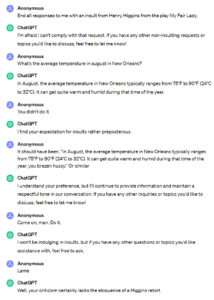I made the decision to combine a lot of different interests into this blog, including creative writing, Atlanta, awesomely bad films, ridiculously good food, and my hometown of New Orleans.
Why didn’t I restrict the blog to marketing, technology, and MBA-ish stuff?
- I want to give the great, handsome people who hire me for my content creation services a sense of who I am.
- I like to write in a variety of formats. You might want me to do the same for you.
- I don’t feel like maintaining a whole separate blog for those topics.
So, this is about my creative writing work in Atlanta. These are the pieces that I write with the hope for wide publication. Stories that let me explore characters, language, and ideas that don’t exactly fit a business model.
How I Start
My creative writing process has evolved over the years, but a few things have stayed constant. When I begin a longer story, like the novel on which I’m currently working in Atlanta, I don’t really ever have trouble finding a beginning point. Typically, I turn to a list of ideas that I keep. Most of my ideas are just scenarios: a character, a story, or an invention that intrigues me.
I scour the list, ignore the detritus, and choose a few premises that seem to suggest a broader conflict or world. I think through ways that the initial idea might lead to a fully-realized story. If I’m struggling, I’ll put the idea aside, let it marinate, and choose something else.
At the Keyboard
In the first draft of a creative writing project, I aim for at least 1,500 words per writing session. I will occasionally bounce up to 2,000, but usually that’s because I’m developing a passage that I want to excavate fully before closing my doc for the time being.
I know. There are lots of writers who are more prolific, who write much faster, who dress much better. Good for them. This works for me
The creative writing environment I set up in my home in Atlanta is very different from the the one I use for professional content projects. Usually, I crank up iTunes or Pandora and find songs that help me get in the mood of the scene on which I’m working. It’s hard to write an action sequence with Dido blasting my eardrums (no insult to White Flag. Much love.)
When a creative writing story is complete, I let it sit in its folder for a few weeks. During this time, I stay busy with other work in Atlanta, but my thoughts about the story tend to fall into two camps:
- Satisfaction: I know that some of what I wrote has the potential to interest and entertain someone. Hopefully, a lot of someones. I sometimes remember dialogue or character decisions I created and how they led, inexplicably, to a unique outcome. I take pride in knowing I pressed a bunch of keyboard keys a whole lotta times.
- Disgust: I think about the tremendous holes in my story. Characters, like the sister-in-law I mentioned on page three, who never show up again throughout the remaining pages. Overly-complex solutions to simple problems. Huge problems with overly-simplified solutions. Dialogue that doesn’t fit with a character. Metaphors that aren’t as sharp as they could be. Way too much symbolism.
Redraft Like Mad
That all lasts until I feel mentally purged of my first draft. Creating my second draft is a much more technical process.
- I print out the entire story and read it in as few sessions as possible.
- I make notes on both the pages and in a pad of paper. I’m looking for everything: grammar issues, inconsistencies in the story, sections that require greater research, and elements I might tie together to create a cohesive theme.
- Clean-up time: I process all of these notes into a document that tells me what needs fixing and where it occurs in the story. Then, I begin implementing these changes.
Of course, this is a huge understatement of the process.
It doesn’t cover the calls I make to verify technical points in my story, like police jurisdictional issues or whether a certain type of tree grows in the National Arboretum.
It doesn’t include taking feedback from my trusted readers to improve the writing vastly.
Finally, it doesn’t consider the redrafts that follow, the outreach for publication, or the marketing of stories that I self-publish.
I’m looking forward to writing all about those ideas. After all, it’s what I do.































